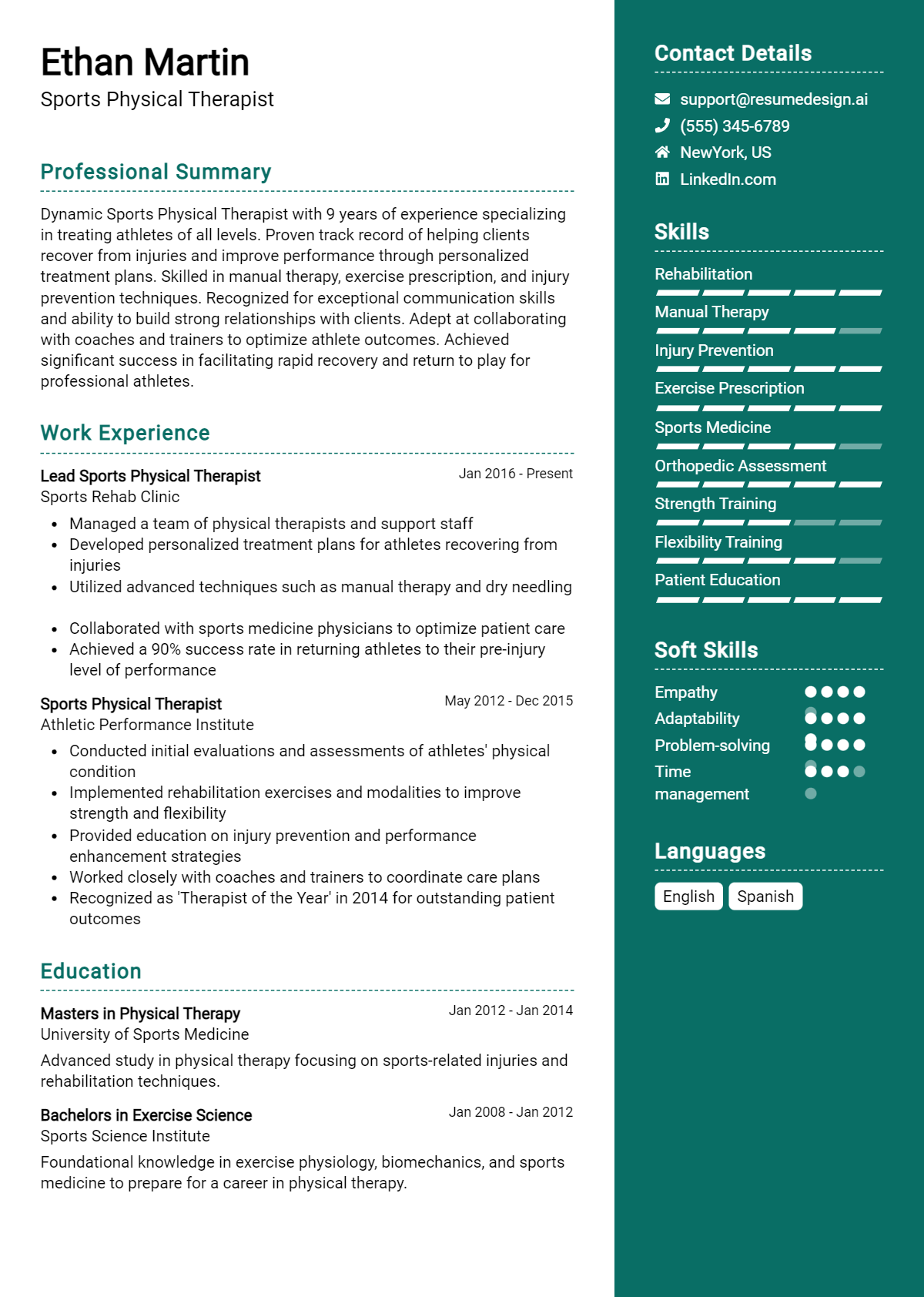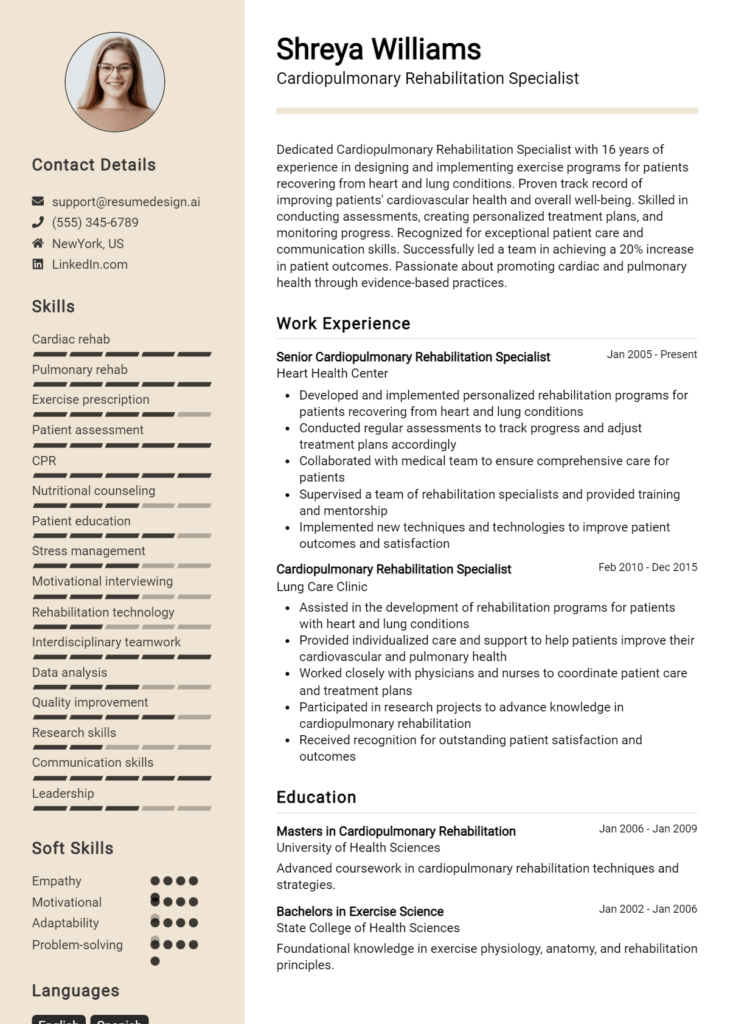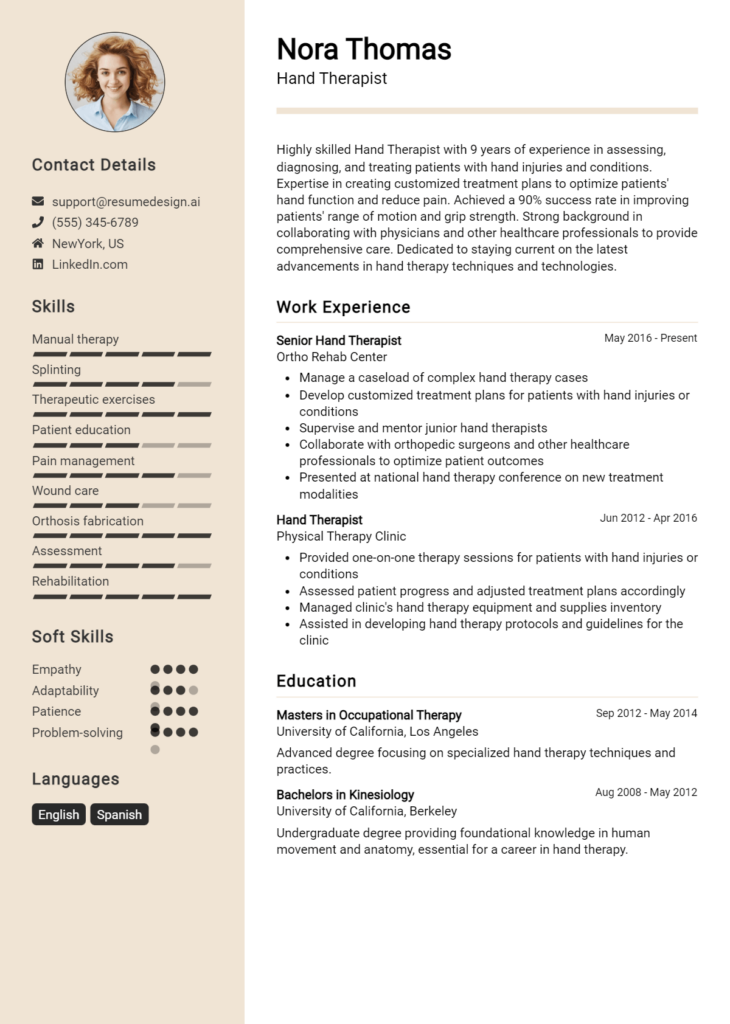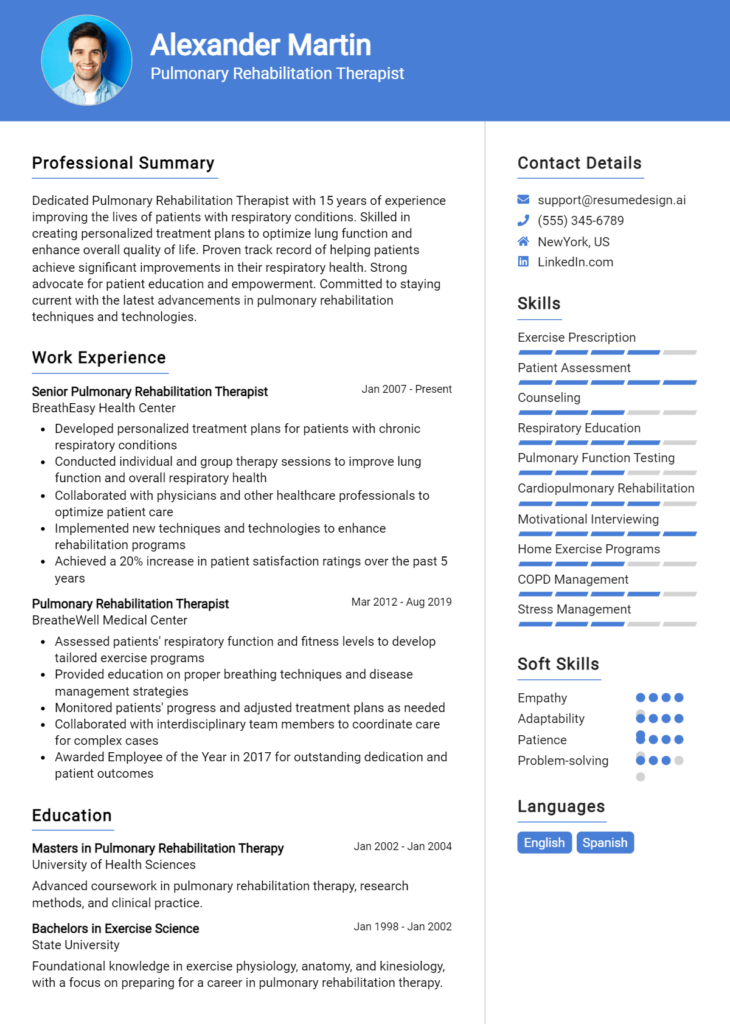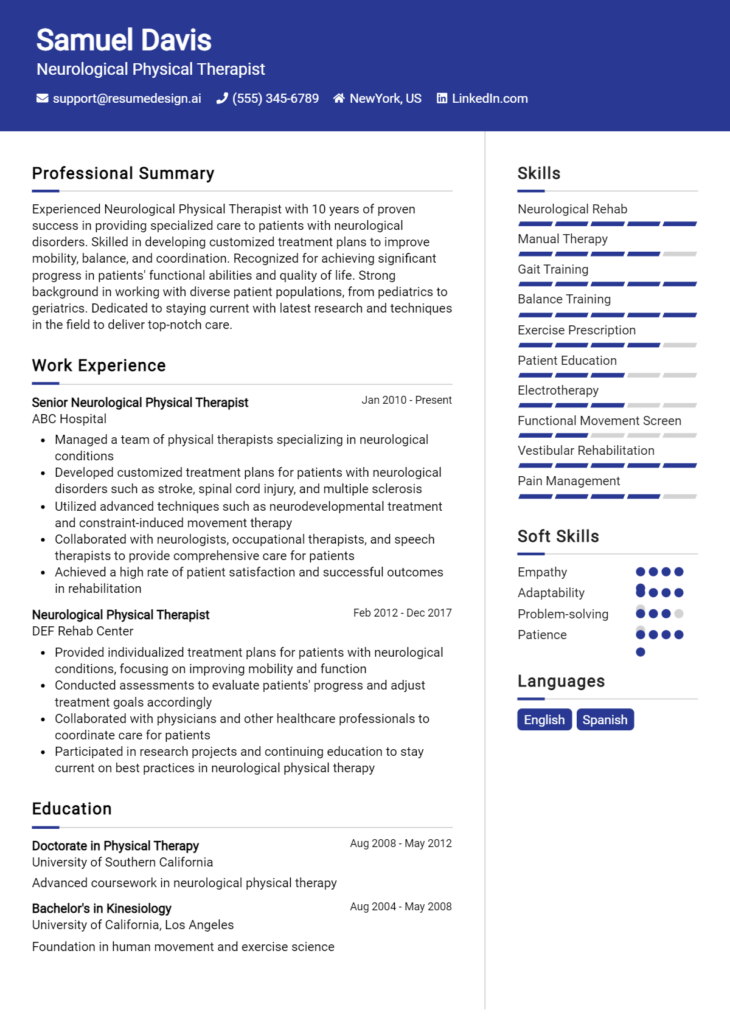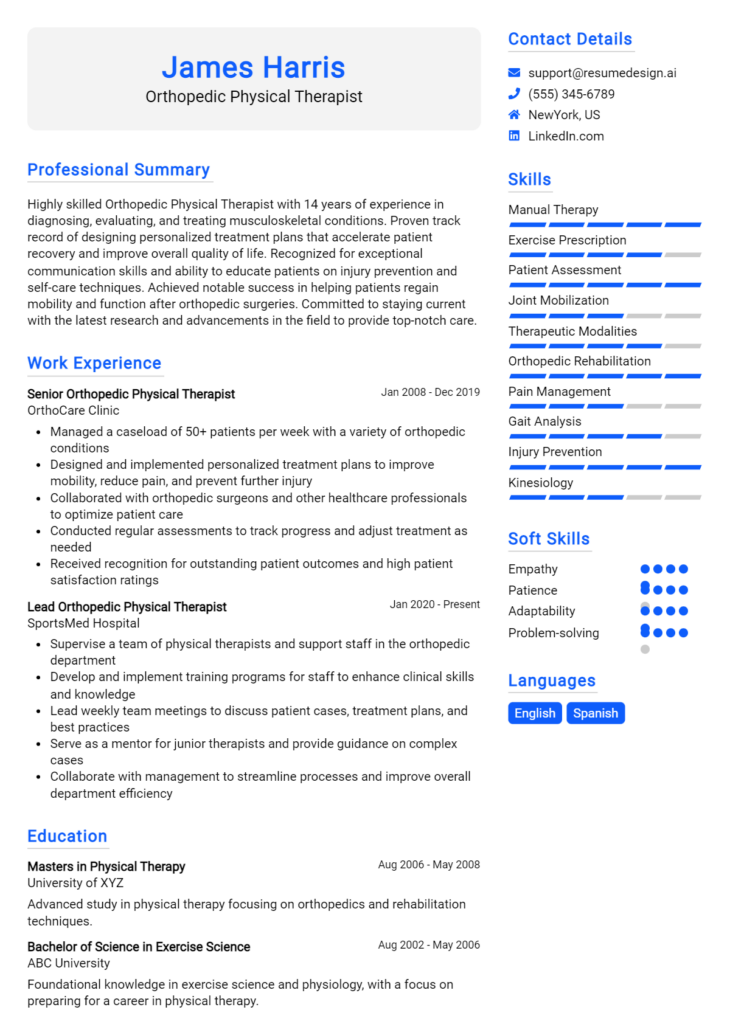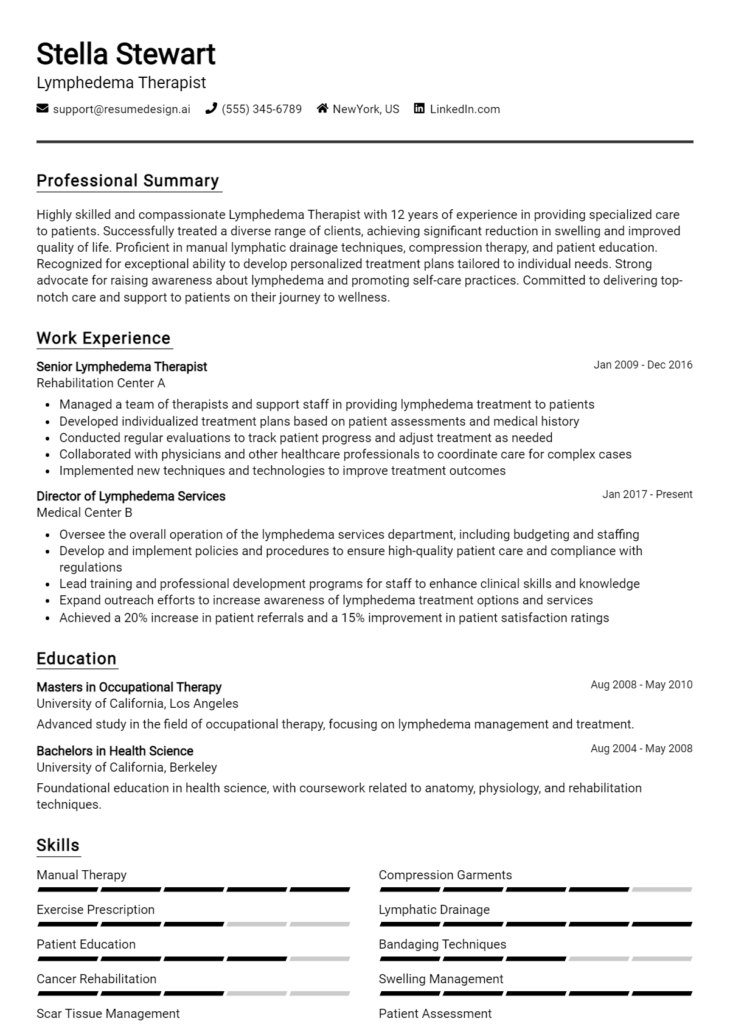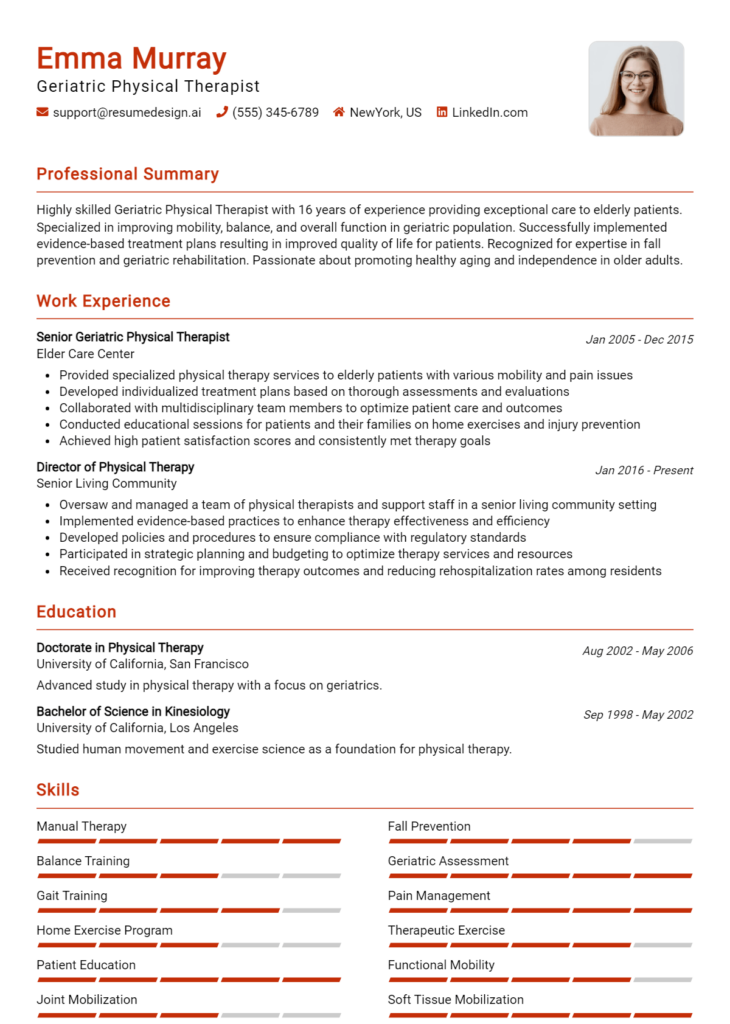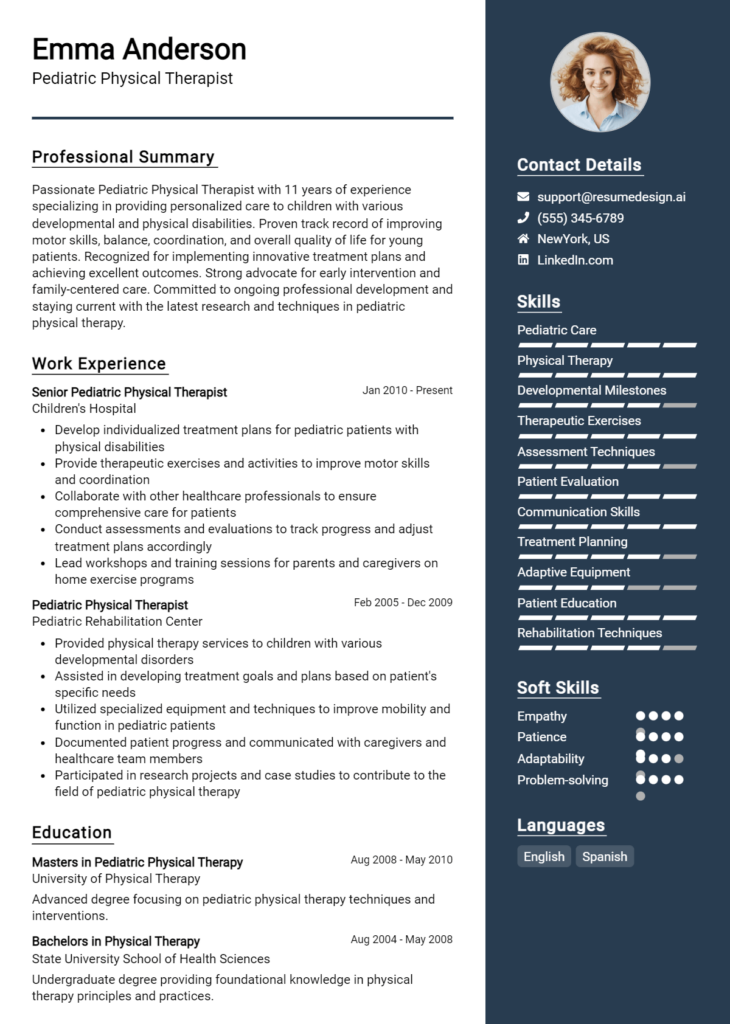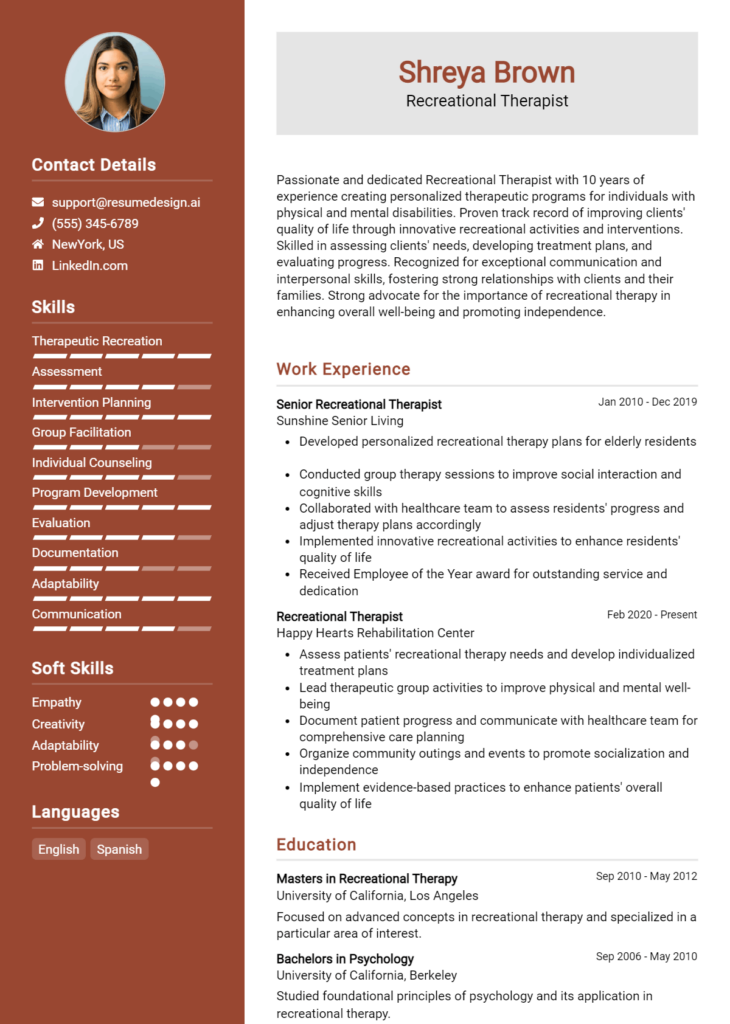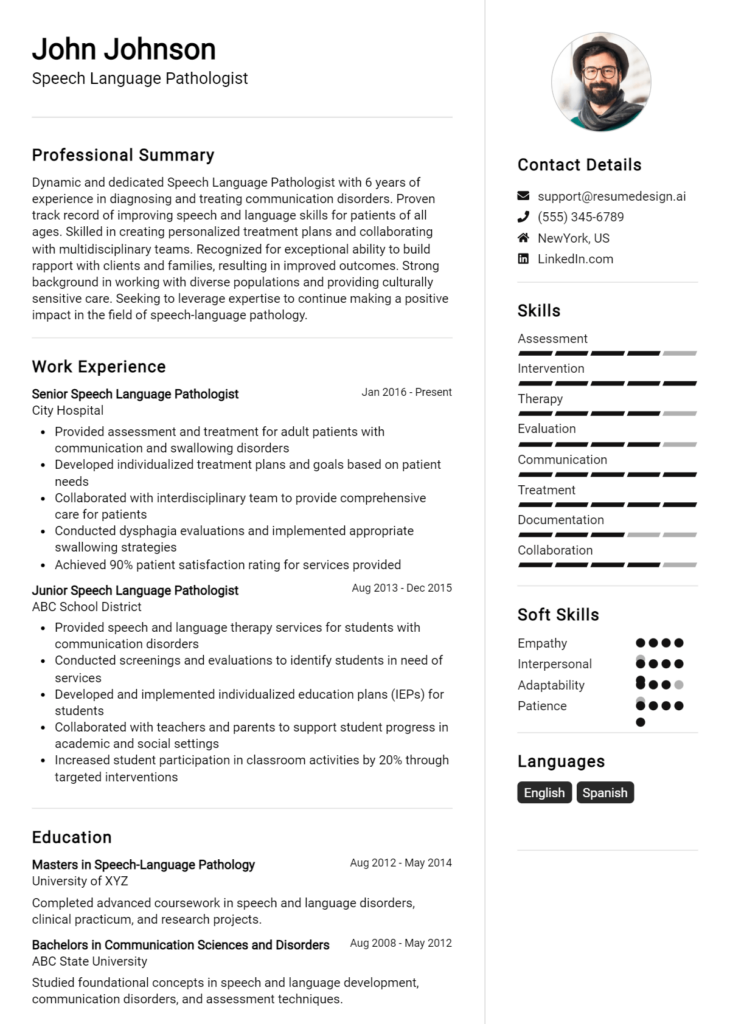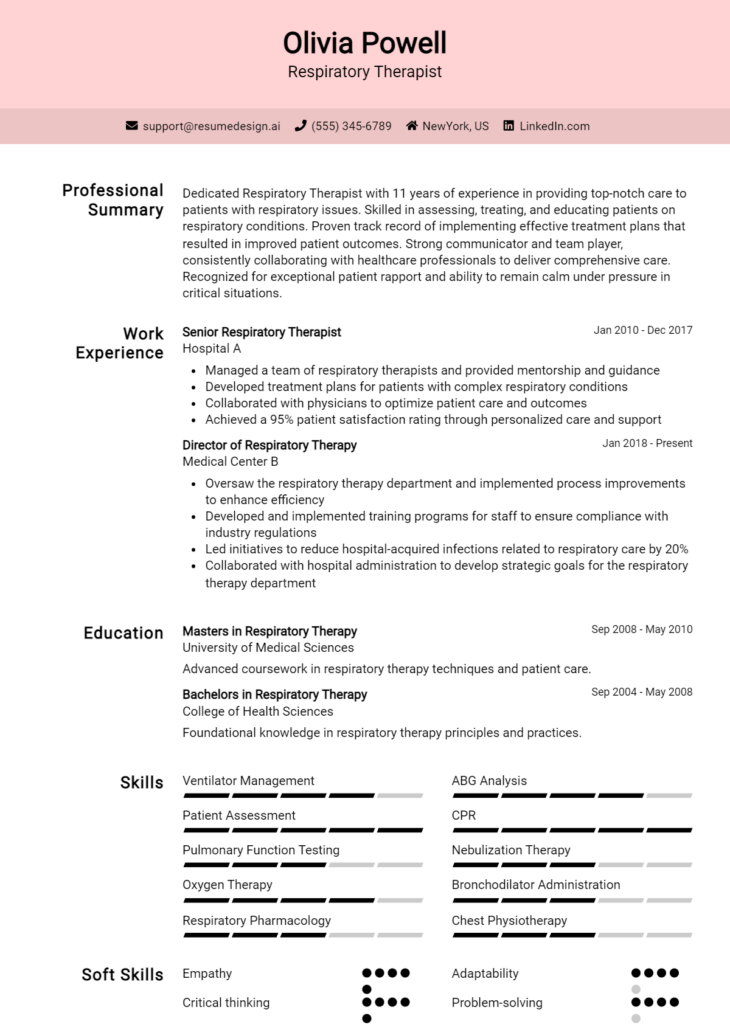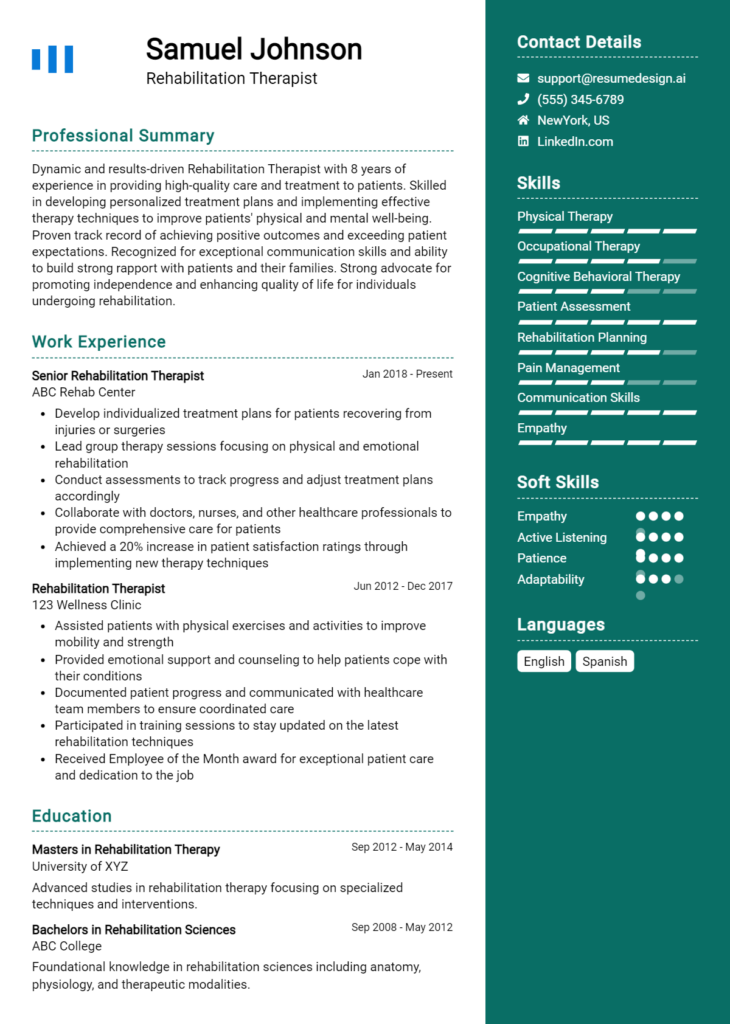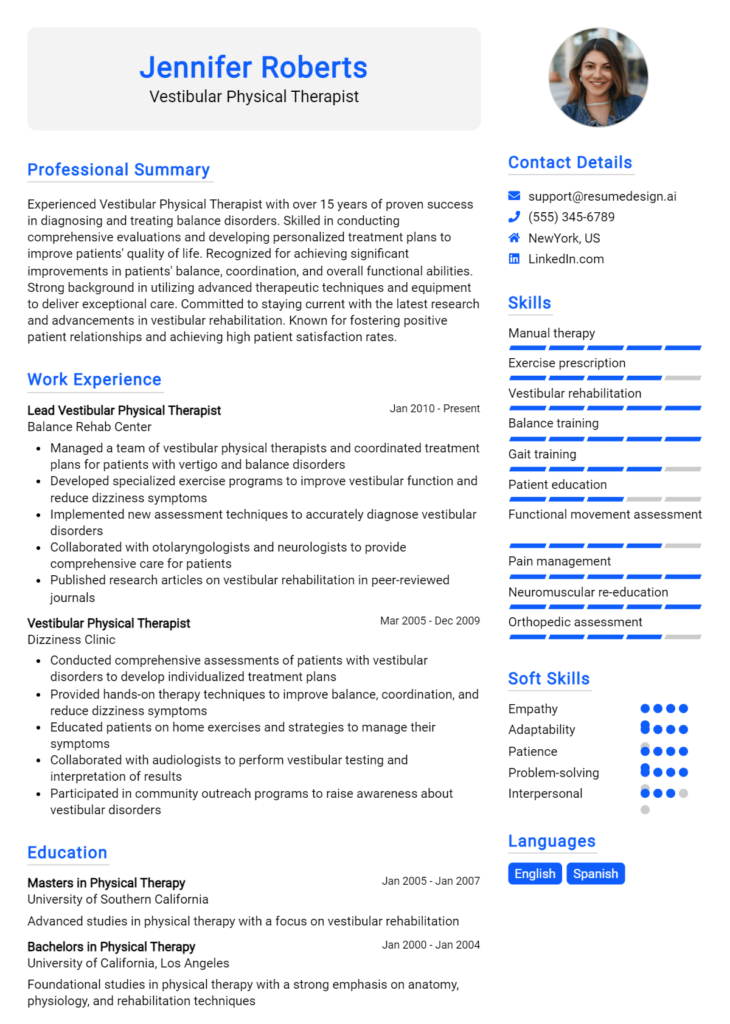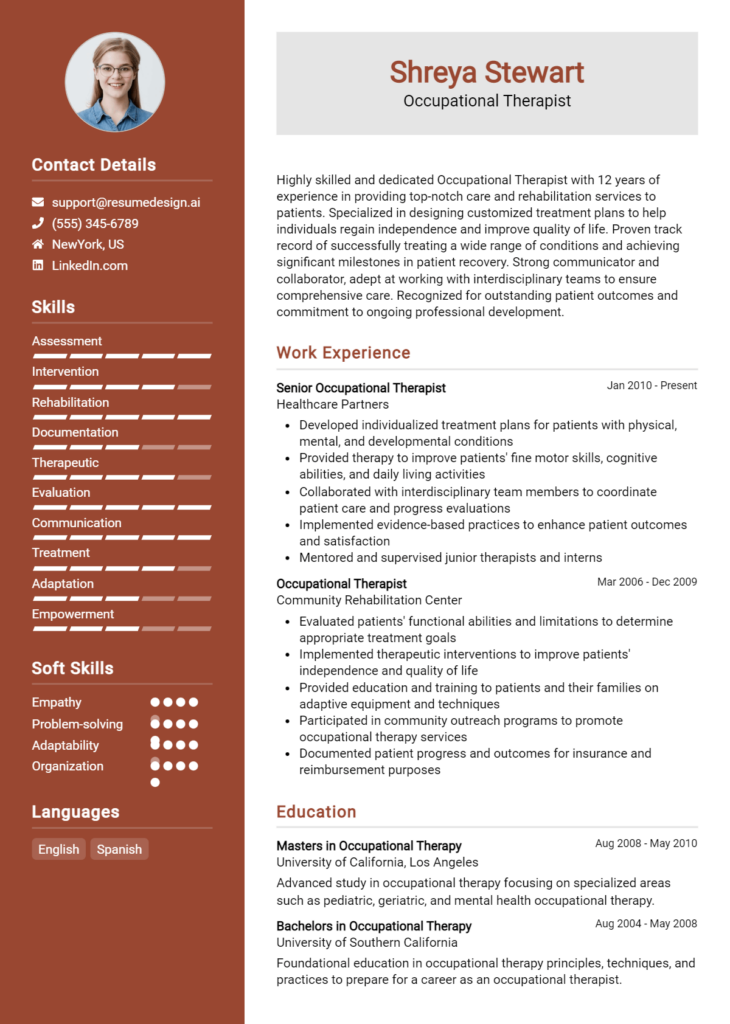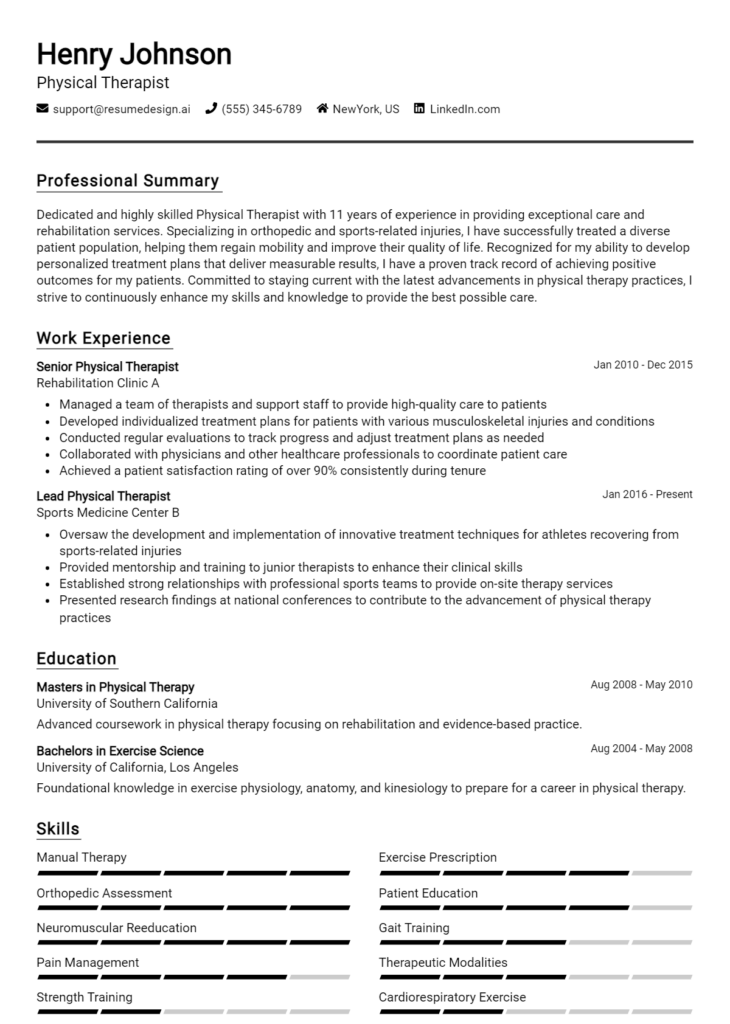Sports Physical Therapist Core Responsibilities
A Sports Physical Therapist plays a pivotal role in enhancing athletic performance and facilitating recovery from injuries. Key responsibilities include conducting thorough assessments, developing personalized rehabilitation programs, and collaborating with coaches, physicians, and athletic trainers. This role requires technical expertise in biomechanics, operational skills for managing treatment plans, and problem-solving abilities to address complex injuries. By effectively showcasing these competencies on a well-structured resume, a candidate can highlight their contribution to the organization's goals of promoting athlete health and performance.
Common Responsibilities Listed on Sports Physical Therapist Resume
- Conduct initial evaluations and assessments of athletic injuries.
- Develop individualized rehabilitation programs for athletes.
- Implement therapeutic exercises and manual therapy techniques.
- Monitor and document patient progress throughout rehabilitation.
- Educate athletes on injury prevention and management strategies.
- Collaborate with multidisciplinary teams to optimize athlete care.
- Utilize advanced modalities and equipment for treatment.
- Provide support during athletic events and competitions.
- Stay updated on the latest research and best practices in sports therapy.
- Advise on return-to-play protocols based on recovery status.
- Maintain accurate and confidential patient records.
- Participate in community outreach and injury prevention programs.
High-Level Resume Tips for Sports Physical Therapist Professionals
In today's competitive job market, a well-crafted resume is crucial for Sports Physical Therapist professionals seeking to make a lasting impression on potential employers. Your resume is often the first point of contact with hiring managers, and it needs to effectively showcase your unique skills, relevant experiences, and notable achievements in the field. A strong resume not only highlights your qualifications but also demonstrates your passion for sports rehabilitation and your commitment to patient care. This guide will provide practical and actionable resume tips specifically tailored for Sports Physical Therapist professionals, ensuring you stand out from the crowd.
Top Resume Tips for Sports Physical Therapist Professionals
- Tailor your resume for each job application by aligning your skills and experiences with the job description.
- Start with a strong summary statement that highlights your key qualifications and career objectives.
- Showcase relevant experience by detailing your work with athletes, including types of injuries treated and rehabilitation techniques used.
- Quantify your achievements by including specific outcomes, such as improved recovery times or successful rehabilitation programs.
- Highlight industry-specific skills, such as knowledge of sports biomechanics, injury prevention, and strength training methodologies.
- Include certifications and licenses relevant to sports physical therapy, emphasizing any specializations like pediatric or geriatric care.
- Utilize action verbs to describe your responsibilities and accomplishments, making your contributions clear and impactful.
- Incorporate any continuing education, workshops, or conferences attended to demonstrate your commitment to professional development.
- Use a clean, professional format with clear headings, bullet points, and consistent fonts to enhance readability.
- Proofread your resume multiple times to eliminate any grammatical errors or typos that could detract from your professionalism.
By implementing these resume tips, you can significantly increase your chances of landing a job in the Sports Physical Therapist field. A polished and targeted resume will not only demonstrate your qualifications but also convey your dedication to helping athletes recover and perform at their best, making you a standout candidate in a competitive landscape.
Why Resume Headlines & Titles are Important for Sports Physical Therapist
In the competitive field of sports physical therapy, a well-crafted resume headline or title is essential for making a strong first impression. This succinct phrase serves as a snapshot of a candidate’s qualifications, abilities, and professional identity, allowing hiring managers to quickly assess the relevance of the applicant. A powerful headline can immediately grab attention, encapsulating key information in a way that invites further exploration of the resume. It should be concise, relevant, and directly tied to the job being applied for, ensuring that it resonates with the specific requirements and expectations of the role.
Best Practices for Crafting Resume Headlines for Sports Physical Therapist
- Keep it concise—aim for one to two impactful sentences.
- Make it role-specific by including relevant keywords from the job description.
- Highlight your unique selling points, such as certifications or specialized experience.
- Use action-oriented language to convey enthusiasm and expertise.
- Avoid jargon and overly complex language; clarity is key.
- Ensure it reflects your professional brand and career goals.
- Consider including measurable achievements to demonstrate effectiveness.
- Tailor the headline for each application to align with the specific employer needs.
Example Resume Headlines for Sports Physical Therapist
Strong Resume Headlines
Expert Sports Physical Therapist Specializing in Injury Rehabilitation and Performance Enhancement
Certified Athletic Trainer with 5+ Years of Experience in Sports Medicine and Patient Care
Dedicated Sports Physical Therapist Committed to Elevating Athletic Performance Through Evidence-Based Techniques
Weak Resume Headlines
Physical Therapist
Experienced Healthcare Professional
The strong headlines are effective because they are specific, highlight key qualifications, and convey a clear professional identity relevant to the sports physical therapy field. They utilize targeted language that speaks directly to the skills and experiences that employers are seeking. In contrast, the weak headlines fail to impress due to their vagueness and lack of detail, leaving hiring managers without a compelling reason to pursue the candidate further. A strong headline not only attracts attention but also sets the stage for a strong overall impression of the applicant's capabilities.
Writing an Exceptional Sports Physical Therapist Resume Summary
A well-crafted resume summary is a critical component for a Sports Physical Therapist, as it serves as the first impression for hiring managers. This concise introduction quickly highlights the candidate's key skills, relevant experience, and noteworthy accomplishments, allowing them to stand out in a competitive job market. An impactful summary not only captures attention but also sets the tone for the rest of the resume. To be effective, it should be tailored to the specific job description, ensuring that the candidate's unique qualifications align with the needs of the employer.
Best Practices for Writing a Sports Physical Therapist Resume Summary
- Quantify achievements: Use specific numbers or metrics to showcase your impact, such as patient recovery rates or the number of athletes treated.
- Focus on relevant skills: Highlight key skills that are directly applicable to the role, such as manual therapy techniques or rehabilitation program design.
- Use action verbs: Begin sentences with strong action verbs to convey confidence and proactivity.
- Keep it concise: Aim for 3-5 sentences that effectively summarize your qualifications without overwhelming the reader.
- Tailor the summary: Customize your summary for each job application to reflect the specific requirements and values of the employer.
- Include certifications: Mention any relevant certifications or licenses that enhance your qualifications.
- Showcase interpersonal skills: Emphasize your ability to work with patients and collaborate with other healthcare professionals.
- Reflect passion for sports: Demonstrate your enthusiasm for sports and physical therapy, which can resonate with hiring managers in athletic environments.
Example Sports Physical Therapist Resume Summaries
Strong Resume Summaries
Dedicated Sports Physical Therapist with over 5 years of experience in treating athletes across various sports. Successfully improved recovery times by 30% through personalized rehabilitation programs, resulting in a 95% patient satisfaction rate.
Dynamic and results-driven Physical Therapist specializing in sports rehabilitation, with a proven track record of enhancing athletic performance. Developed and implemented comprehensive therapy protocols that reduced injury recurrence by 40% over two years.
Certified Sports Physical Therapist with a passion for helping athletes recover and excel. Achieved a 90% success rate in returning clients to their sport within 6 weeks post-injury through innovative treatment plans and hands-on manual therapy techniques.
Experienced Sports Physical Therapist with expertise in managing post-operative rehabilitation for competitive athletes. Collaborated with sports teams to create tailored recovery strategies, resulting in a 25% improvement in return-to-play timelines.
Weak Resume Summaries
I am a Physical Therapist who works with athletes and helps them recover from injuries.
Enthusiastic about sports therapy and have experience in rehabilitation.
The strong resume summaries are effective because they include specific achievements, quantify results, and highlight relevant skills that align with the role of a Sports Physical Therapist. They demonstrate the candidate's impact and expertise, which can greatly attract hiring managers. In contrast, the weak summaries lack specificity, fail to convey measurable outcomes, and appear generic, making them less compelling in a competitive job market.
Work Experience Section for Sports Physical Therapist Resume
The work experience section of a Sports Physical Therapist resume is crucial as it serves as a platform to showcase the candidate’s technical skills, leadership abilities, and commitment to delivering high-quality therapeutic services. This section not only highlights specific roles and responsibilities but also emphasizes the impact of the candidate’s contributions through quantifiable achievements. Aligning past experiences with industry standards is essential, as it demonstrates a clear understanding of the demands within the field and assures potential employers of the candidate's capability to excel in their practice.
Best Practices for Sports Physical Therapist Work Experience
- Utilize action verbs to describe responsibilities and accomplishments.
- Quantify achievements with specific metrics (e.g., patient recovery rates, number of patients treated).
- Highlight technical skills relevant to sports physical therapy, such as manual therapy techniques or rehabilitation programs.
- Include collaborative experiences, indicating how you worked with teams to achieve patient goals.
- Focus on outcomes that improved patient quality of life or athletic performance.
- Align your experience with industry standards and best practices for physical therapy.
- Showcase continuous professional development, such as certifications or specialized training.
- Tailor your experiences to the job description, emphasizing relevant skills and achievements.
Example Work Experiences for Sports Physical Therapist
Strong Experiences
- Implemented a new rehabilitation program that increased patient recovery rates by 30% within six months.
- Led a team of physical therapists in a sports clinic, improving patient throughput by 25% while maintaining high satisfaction scores.
- Collaborated with coaches and athletic trainers to develop individualized treatment plans for 50+ athletes, resulting in a 20% reduction in injury recurrence.
- Conducted workshops on advanced therapeutic techniques, enhancing team knowledge and improving patient outcomes by 15%.
Weak Experiences
- Worked with patients to help them recover from injuries.
- Assisted in therapy sessions when needed.
- Participated in team meetings and discussions.
- Helped to maintain a clean and safe therapy environment.
The examples labeled as strong are considered effective because they provide specific, quantifiable outcomes and highlight leadership and collaboration within the role. They demonstrate a clear impact on patient care and the efficiency of the practice. In contrast, the weak examples lack specificity and measurable results, making them less compelling to potential employers. They do not convey the candidate's true capabilities or contributions to their previous roles.
Education and Certifications Section for Sports Physical Therapist Resume
The education and certifications section of a Sports Physical Therapist resume is crucial as it showcases the candidate's academic background and professional qualifications. This section not only highlights relevant degrees and certifications, but also emphasizes the candidate's commitment to continuous learning and professional development within the field. By providing specific coursework, industry-recognized certifications, and specialized training, candidates can significantly enhance their credibility and demonstrate their alignment with the job role, making them more attractive to potential employers.
Best Practices for Sports Physical Therapist Education and Certifications
- List relevant degrees, such as a Doctor of Physical Therapy (DPT), prominently at the top.
- Include any industry-recognized certifications, such as the Board Certified Clinical Specialist in Sports Physical Therapy (SCS).
- Highlight specialized training in areas like sports rehabilitation or manual therapy.
- Provide detailed information about relevant coursework that aligns with the job requirements.
- Include the dates of completion for degrees and certifications to show currency.
- Use clear formatting to distinguish between degrees and certifications for easy readability.
- Consider adding continuing education courses to demonstrate ongoing professional development.
- Tailor the education and certifications section to match the specific requirements of the job posting.
Example Education and Certifications for Sports Physical Therapist
Strong Examples
- Doctor of Physical Therapy (DPT), University of XYZ, 2021
- Board Certified Clinical Specialist in Sports Physical Therapy (SCS), 2022
- Specialized coursework in Sports Rehabilitation Techniques, 2020
- Certified Strength and Conditioning Specialist (CSCS), National Strength and Conditioning Association, 2021
Weak Examples
- Bachelor of Arts in Psychology, University of ABC, 2018
- Certification in Basic Life Support (BLS), 2019 (not specific to sports therapy)
- Online course in General Fitness, 2020 (not relevant to physical therapy)
- High School Diploma, 2017
The strong examples are considered effective because they directly relate to the skills and knowledge required for a Sports Physical Therapist, showcasing advanced qualifications and relevant specialties. In contrast, the weak examples indicate a lack of focus on the specific needs of the role, featuring degrees and certifications that do not enhance the candidate's suitability for a position in sports physical therapy.
Top Skills & Keywords for Sports Physical Therapist Resume
As a Sports Physical Therapist, possessing a well-rounded skill set is crucial for effectively aiding athletes in their recovery and performance enhancement. A strong resume that highlights both hard and soft skills can make a significant difference in standing out to potential employers. Hard skills demonstrate your technical abilities and specialized knowledge, while soft skills reflect your interpersonal qualities and communication proficiency. Together, these skills form a comprehensive picture of your qualifications, showcasing your capacity to support athletes in achieving their goals while promoting their overall well-being. For more insights on essential skills and work experience to include in your resume, read on.
Top Hard & Soft Skills for Sports Physical Therapist
Soft Skills
- Empathy
- Communication
- Teamwork
- Problem-solving
- Adaptability
- Time management
- Leadership
- Motivational skills
- Active listening
- Conflict resolution
- Patience
- Cultural competence
- Client-focused mindset
- Professionalism
- Emotional intelligence
Hard Skills
- Knowledge of anatomy and physiology
- Rehabilitation techniques
- Injury assessment and prevention
- Exercise prescription
- Manual therapy techniques
- Sports-specific training
- Gait analysis
- Therapeutic modalities
- Athletic performance analysis
- Knowledge of exercise physiology
- Familiarity with sports medicine protocols
- Electronic health record (EHR) management
- CPR and first aid certification
- Kinesiology taping
- Equipment handling and safety protocols
- Research and evidence-based practice
- Knowledge of orthopedic conditions
Stand Out with a Winning Sports Physical Therapist Cover Letter
Dear [Hiring Manager's Name],
I am writing to express my interest in the Sports Physical Therapist position at [Company/Organization Name] as advertised on [Where You Found the Job Posting]. With a Doctorate in Physical Therapy and extensive experience working with athletes across various sports, I am excited about the opportunity to contribute to your team's mission of enhancing athletic performance and promoting recovery. My passion for sports rehabilitation, combined with my hands-on experience in clinical settings, positions me as a strong candidate for this role.
Throughout my career, I have had the privilege of working with athletes of all levels, from amateur to professional. At my previous position with [Previous Employer], I developed and implemented individualized rehabilitation programs tailored to the specific needs of each athlete, focusing on injury prevention and performance enhancement. My approach combines evidence-based therapeutic techniques with a deep understanding of sports biomechanics, allowing me to effectively address complex musculoskeletal issues. Additionally, I have collaborated closely with coaches and other healthcare professionals, ensuring a holistic approach to each athlete's care.
I am particularly drawn to [Company/Organization Name] because of your commitment to innovation and excellence in sports medicine. I admire your emphasis on research and continuous education, which aligns with my belief in the importance of staying updated with the latest advancements in physical therapy. I am eager to bring my skills in functional movement assessment, manual therapy, and sports-specific rehabilitation to your esteemed institution, contributing to the overall success of your athletes.
Thank you for considering my application. I look forward to the opportunity to discuss how my background, skills, and passion for sports physical therapy can add value to your team. I am excited about the possibility of working together to support athletes in achieving their goals and returning to peak performance.
Warm regards,
[Your Name]
[Your Phone Number]
[Your Email Address]
Common Mistakes to Avoid in a Sports Physical Therapist Resume
When crafting a resume for a Sports Physical Therapist position, it’s crucial to present your qualifications and experience in a way that stands out to employers. However, many candidates make common mistakes that can hinder their chances of landing an interview. By recognizing and avoiding these pitfalls, you can create a more effective resume that highlights your skills and expertise in the field of sports medicine.
Neglecting to Tailor the Resume: A generic resume that doesn’t address the specific job description can make you appear uninterested or unqualified. Always customize your resume to reflect the skills and experiences that align with the job requirements.
Overloading with Technical Jargon: While it’s important to demonstrate your knowledge, excessive use of technical terms can alienate hiring managers who may not be familiar with the terminology. Aim for a balance that showcases expertise without overwhelming the reader.
Poor Formatting: A cluttered or inconsistent format can make your resume difficult to read. Use clear headings, bullet points, and a clean layout to enhance readability and professionalism.
Omitting Relevant Certifications: Certifications such as the Certified Sports Physical Therapist (CSPT) or other relevant credentials are crucial in this field. Failing to include these can make you seem less qualified than other candidates.
Ignoring Quantifiable Achievements: Employers appreciate measurable results. Instead of simply listing responsibilities, include specific achievements and outcomes, such as improved recovery times or increased athletic performance among your clients.
Lack of Continuing Education: The field of sports therapy is constantly evolving. Not mentioning ongoing education, workshops, or courses can give the impression that you are not committed to professional growth.
Using Unprofessional Email Addresses: An unprofessional email address can detract from the overall impression of your resume. Always use a simple, professional email that includes your name for a more credible presentation.
Failing to Include Soft Skills: While technical skills are essential, soft skills like communication, teamwork, and empathy are equally important in sports therapy. Make sure to highlight these attributes to demonstrate your holistic approach to patient care.
Conclusion
As a Sports Physical Therapist, your role is crucial in helping athletes recover from injuries, improve performance, and maintain optimal physical condition. Throughout this article, we've explored the essential skills and qualifications necessary for this profession, including expertise in rehabilitation techniques, knowledge of sports injuries, and the ability to communicate effectively with patients and sports teams. We also discussed the importance of staying updated with the latest advancements in sports medicine and rehabilitation practices.
To stand out in this competitive field, having a well-crafted resume is essential. It should highlight your relevant experience, education, and any specialized certifications that set you apart from other candidates. As you reflect on your resume, consider how your unique skills and experiences align with the demands of the sports physical therapy role.
Now is the perfect time to review and enhance your Sports Physical Therapist resume. Take advantage of the available resources to streamline your job application process. Explore resume templates for inspiration, use the resume builder to create a professional document easily, and check out resume examples to see how others in your field present their qualifications. Additionally, don’t forget to craft a compelling cover letter using cover letter templates to complement your resume.
Take action today to ensure your resume reflects your strengths and positions you for success in your career as a Sports Physical Therapist!

